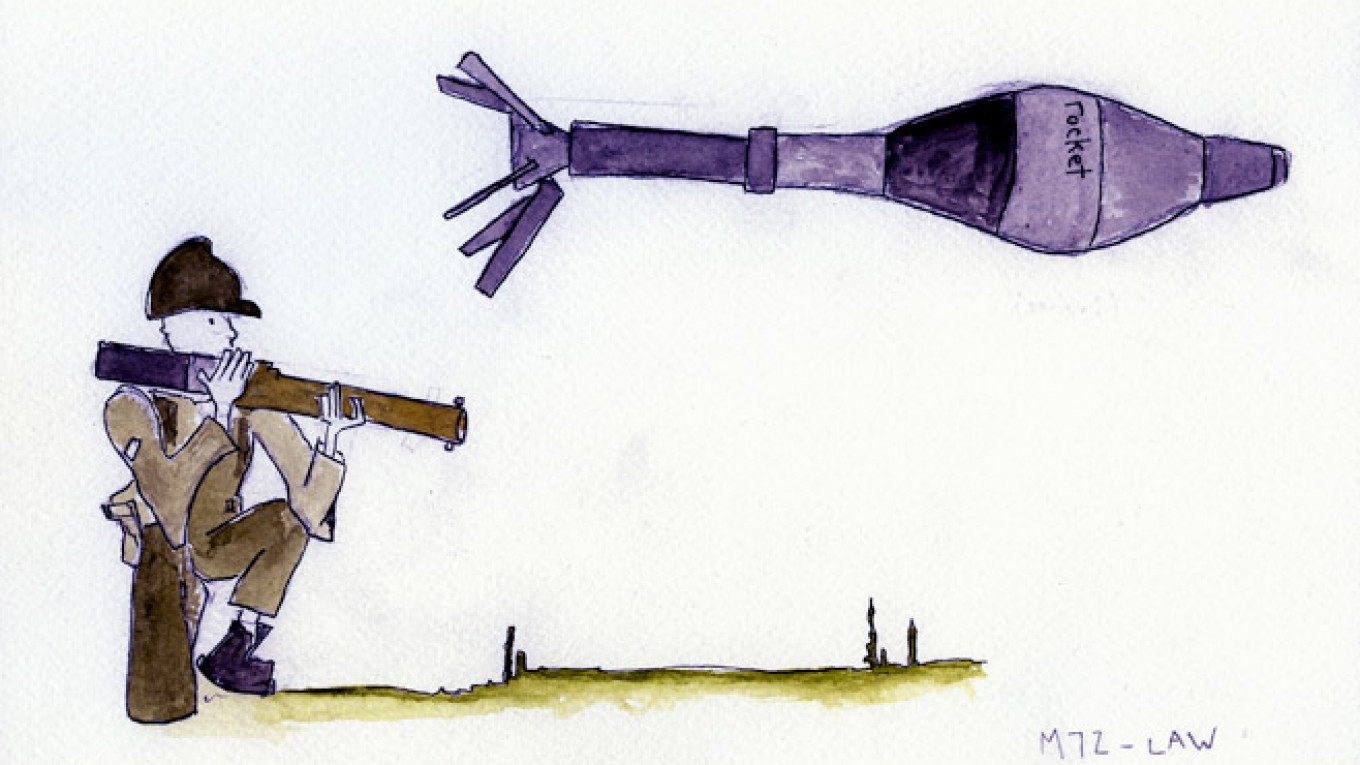Congressional lawmakers this week called for $1 billion in military aid for the Ukrainian army, joining a barrage of lobbying by top U.S. officials and military officers. Obama has said he is considering the plan.
Washington says Russia is supplying separatist forces — which Moscow denies — and U.S. equipment would enable the Ukrainian army to stand its ground. Many warn the move would escalate rather than defuse a conflict that has already claimed over 5,000 lives.
But what would the United States supply? So far the clearest policy outline to emerge is from The Atlantic Council, a U.S. think tank that two weeks ago released a report recommending $3 billion in lethal and non-lethal military aid for Ukraine over three years.
The report has a weighty author list, with former U.S. Ambassador to Ukraine Steven Pifer and Brookings Institute president and former Deputy Secretary of State Strobe Talbott among the luminaries.
Using the council's report as a guide, The Moscow Times looked at what the United States could deliver to Ukraine:
Light Anti-Armor Weapons
Ukraine needs effective means of destroying rebel armored vehicles, especially tanks. Over two-thirds of Ukraine's anti-tank weapons are non-functional, the Atlantic Council report said, allowing the rebels leeway to use the large numbers of tanks and armored vehicles that the NATO alliance says Russia has moved into eastern Ukraine.
Reuben Johnson, a Kiev-based military expert working for IHS Jane's defense consultancy, told the BBC that Ukraine's military desperately needs functional anti-armor weapons because "almost all the Russian armor is reactive — that means boxes of explosives cover the tank, so when a missile hits a box it blows up the missile without harming the tank."
Though Ukraine has asked the United States for advanced Javelin-type anti-tank weapons, the United States could send less advanced M72 LAWs (pictured above), which are disposed of after firing a single round.
Armored Humvees
The U.S. military's iconic four-wheeled vehicle of choice in Afghanistan and Iraq. Humvees work in all weather conditions, are highly reliable and would make it safer for Ukrainian troops to traverse the artillery-laden battlefields of eastern Ukraine.
According to the Atlantic Council, around 70 percent of Ukraine's casualties are the result of separatist rocket and artillery fire.
Field Hospitals and Related Medical Equipment
Ukraine's military has reportedly lost a number of men for lack of proper battlefield medical care. Supplying field hospitals would allow wounded servicemen to receive life-saving treatment close to the battlefield.
Counter-Battery Radars

Counter-battery radars would significantly boost Kiev's ability to repulse rebel assaults by rapidly determining the source and location of rebel artillery, mortar and rocket fire.
The United States has already supplied Ukraine with three small-scale versions of these radars, known as Light Counter-Mortar Radars (LCMRs, pictured above atop a U.S. Humvee), which can be easily transported by ground troops.
Larger systems, such as the ThalesRaytheonSystems Firefinder systems could also be deployed to give Kiev up to 50 kilometers of coverage, as opposed to the LCRM's 10 kilometers. These would make a bigger impact, considering that the range of the Russian-made Grad rocket launchers used by the rebels is up to 40 kilometers.
Unmanned Aerial Vehicles (UAVs) for Reconnaissance

Unarmed aerial drones enable an army to spy on enemy positions. They would allow Ukraine to find rebel batteries before they open fire and track troop movements behind enemy lines.
The Atlantic Council also said the United States should provide UAV jammers to Kiev's forces.
The rebels are using Russian-made Orlan-10 drones to scope out Ukrainian military movements and positions, according to VICE News. Giving the Ukrainian army the ability to disrupt the operation of these drones would remove a valuable "eye in the sky" for the separatists.
Secure Communications
The council's report said the rebels are also using other types of drones to collect signals intelligence — scooping up Ukrainian communications, which are unencrypted and easy to intercept.
Ukraine currently conducts a good deal of tactical communication through open radio transmissions or even cellphones — making their on-the-ground movements extremely vulnerable to Russian intelligence gathering capabilities. U.S. equipment would help them hide their messages.
A Message from The Moscow Times:
Dear readers,
We are facing unprecedented challenges. Russia's Prosecutor General's Office has designated The Moscow Times as an "undesirable" organization, criminalizing our work and putting our staff at risk of prosecution. This follows our earlier unjust labeling as a "foreign agent."
These actions are direct attempts to silence independent journalism in Russia. The authorities claim our work "discredits the decisions of the Russian leadership." We see things differently: we strive to provide accurate, unbiased reporting on Russia.
We, the journalists of The Moscow Times, refuse to be silenced. But to continue our work, we need your help.
Your support, no matter how small, makes a world of difference. If you can, please support us monthly starting from just $2. It's quick to set up, and every contribution makes a significant impact.
By supporting The Moscow Times, you're defending open, independent journalism in the face of repression. Thank you for standing with us.
Remind me later.


